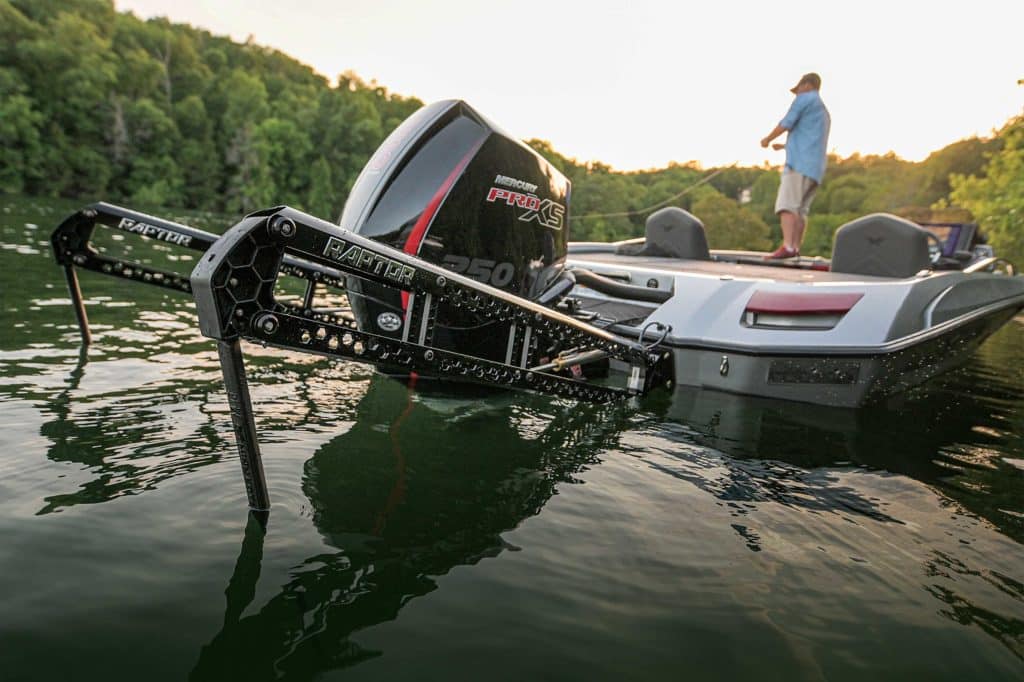
Employed since the dawn of man’s ventures afloat, anchors remain essential today for safety and overnighting. However, in recent years, three systems have emerged that can hold a boat in position without deploying a conventional anchor. Let’s look at each.
Shallow-Water Anchors
Installed on the transom, a shallow-water anchor jabs a flexible pole into bottom mud, marl or sand at the push of a button. Power Pole developed the first of these, which uses a 12-volt DC electrohydraulic system to rapidly deploy and retract its scissorlike apparatus. More recently, Minn Kota introduced two all-electric 12-volt DC systems: the Talon and the Raptor. Both have a following among bass and bay boaters, who pursue fish in relatively shallow water.
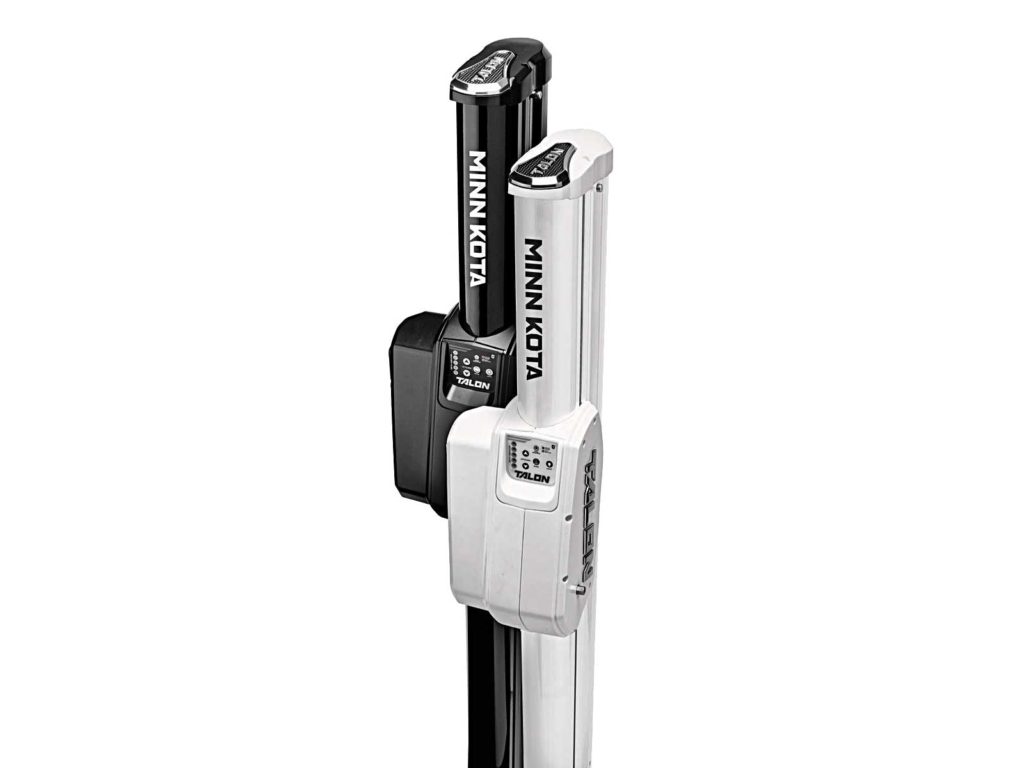
The original shallow-water anchors worked in about 6 to 8 feet of water, but newer models allow anchoring in depths down to 15 feet. Many include features like wireless remotes, integrate with multifunction displays, and have sensors that automatically adjust for rough water or bottom composition. Adapter plates let you use existing outboard mounting bolts for the anchor mounts, eliminating the need to drill holes in the transom. You can also order the poles in colors to match or contrast with your boat’s hues.
Just one pole might not be sufficient because it won’t stop the boat from pivoting in wind or current. So most bass and bay boats today have two poles on the transom to maintain the boat orientation that’s most advantageous for fishing a particular spot.
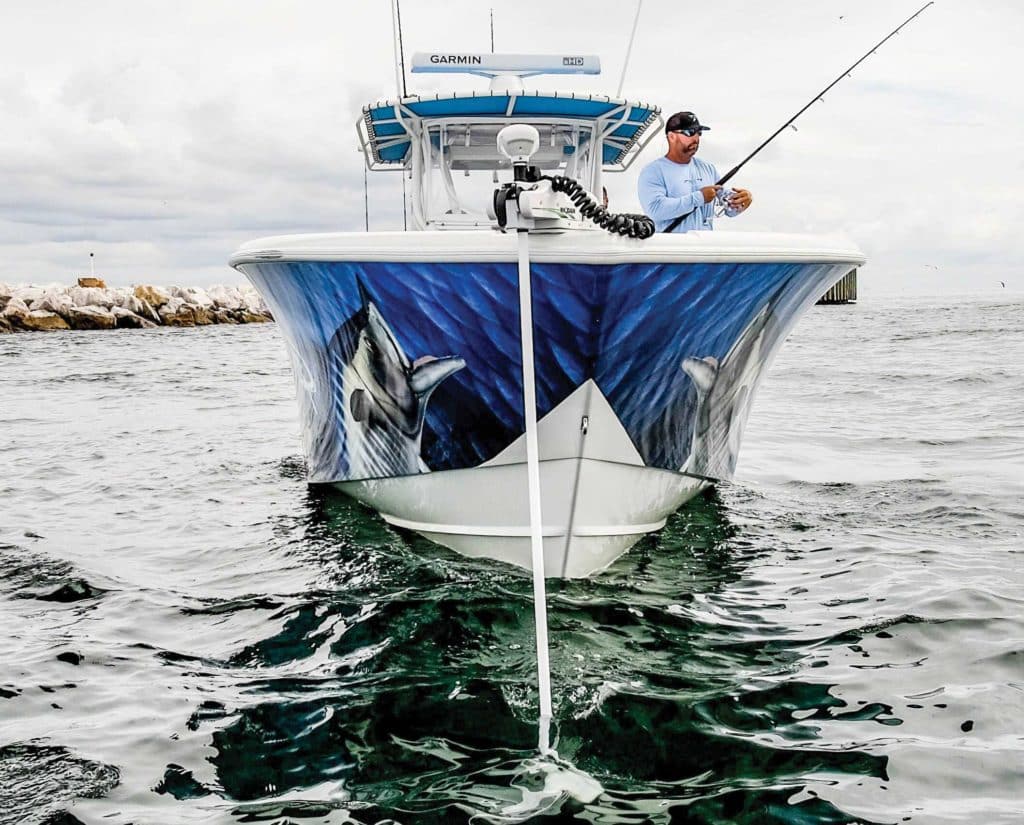
Electric Trolling Motors
Born in the bass-boat market decades ago, bow-mounted trolling motors soon spread to bay boats. While they have always been immensely useful for silently positioning a boat while fishing, virtual anchoring technology has taken the angling world by storm. Minn Kota pioneered this with the Spot-Lock feature on its GPS-guided motors
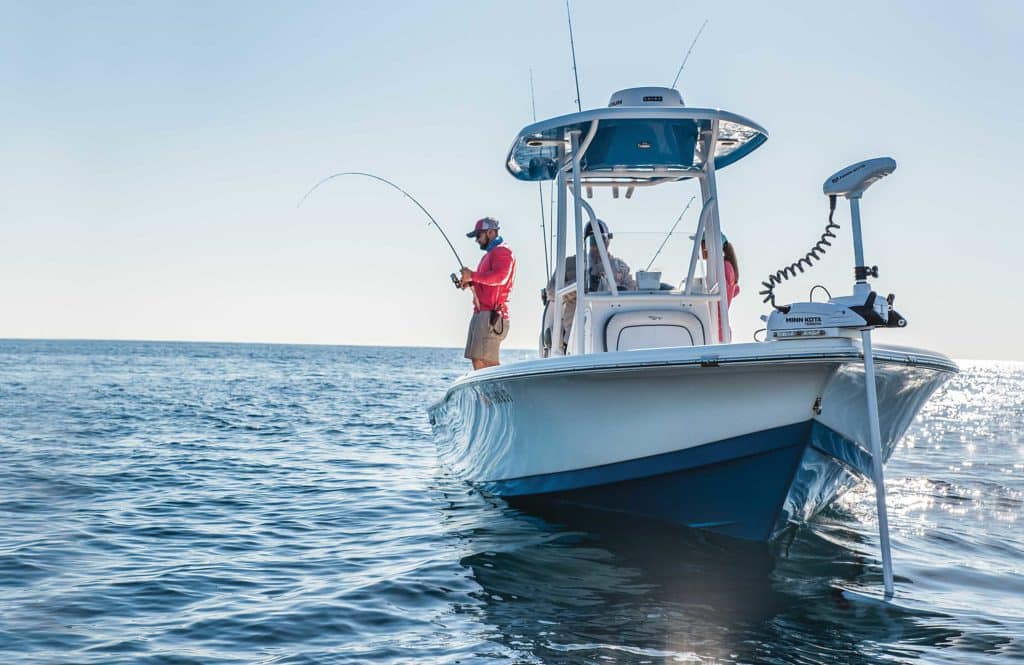
Today other trolling-motor brands, including Garmin, Lowrance, MotorGuide and Rhodan, offer a similar function on certain models. With the press of button, the motor uses its directional thrust and GPS receiver to hold the boat in position.
Use of this anchoring technology has grown beyond bass and bay boats. Anglers with larger center-consoles demanded GPS-guided trolling motors they can use on the high bows of their boats for kite- and wreck-fishing. Both Minn Kota and Rhodan responded with models featuring taller shafts. Rhodan’s tallest, for example, is 96 inches, with thrust as high as 120 pounds delivered by a three-battery-bank, 36-volt system. The motor’s positioning function is called HD GPS Anchor.
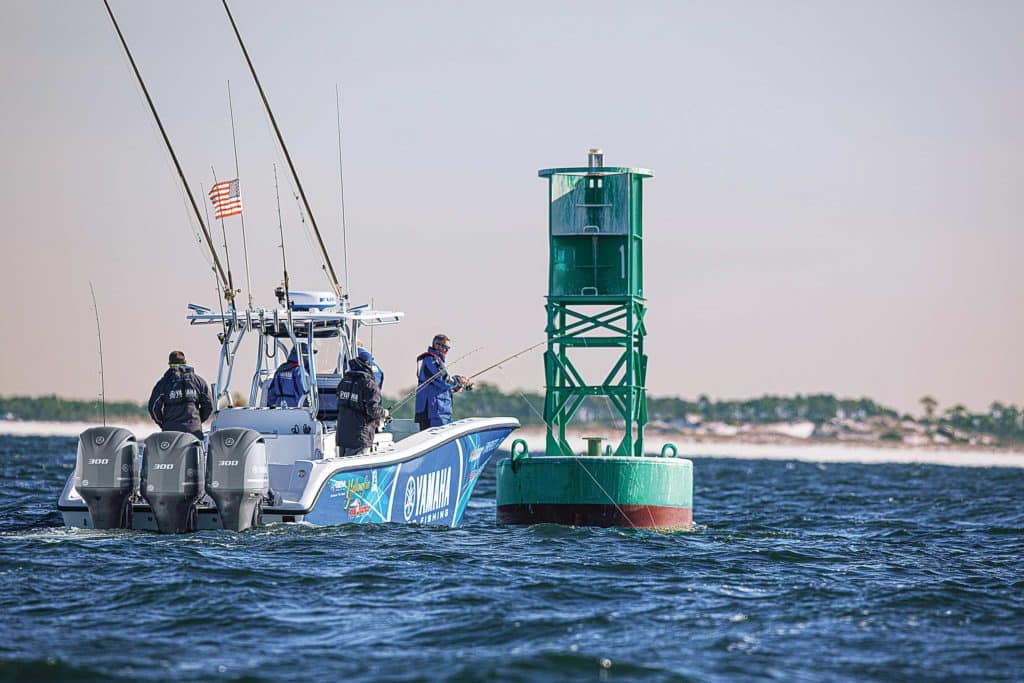
Joystick Systems
Joystick systems from marine-engine brands such as Mercury, Volvo Penta and Yamaha Outboards offer a host of features for low-speed maneuvering, including a virtual-anchor or station-keeping function. Yamaha’s Helm Master EX system, for instance, offers a number of SetPoint modes. One is StayPoint. On a multi-engine boat, it uses GPS and independent outboard thrust to maintain both the boat’s position and heading to within 10 feet from the point of activation in ideal conditions.
Read Next: Yamaha Helm Master EX
You can use this type of virtual-anchor function when waiting for a drawbridge, a slip to open up, or your turn at the fuel dock. For fishing, however, a virtual-anchor function such as Yamaha’s FishPoint will maintain the boat’s position but not the heading. This can be a great solution for fishing vertically over a wreck without risking a fouled anchor in the rusty hulk below.
While alternate methods of anchoring grant no excuse to abandon the principles of prudent seamanship or stop carrying a conventional anchor, these methods can result in greater convenience and more effective tactics for boating anglers.









